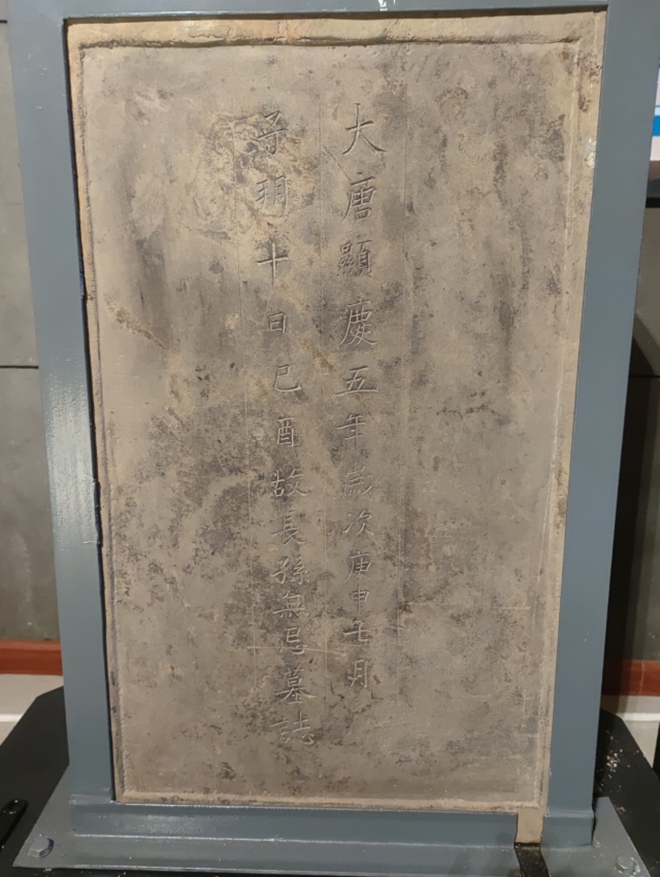
Photo: Courtesy of Liu Xingliang
Featuring more than 230 ancient steles and stone rubbings,
mk the exhibition History Engraved on Stone opened in Chongqing on Tuesday. Among those displays, a Tang Dynasty (618-907) epitaph can be viewed by the public for the first time since its excavation in 1997.
The epitaph, engraved on a stone stele, is a national first-class cultural relic. It belonged to Zhangsun Wuji, who held the position of zai xiang, during the Tang Dynasty, which is similar to the modern-day role of a chancellor, or prime minister.
The ancient high official's stele was engraved with only 26 Chinese characters revealing his time of birth and death. Liu Xingliang, the exhibition's curator, told the Global Times that such minimalistic documentation is "not traditional" for a high official's epitaph, but still depicts the poignant final chapter of his life.
"Zhangsun Wuji made great contributions to the country under the reign of Emperor Taizong. However, after the emperor's time, Zhangsun Wuji was falsely accused of treason and exiled to Qinzhou [the modern-day Pengshui Miao-Tujia autonomous county in Chongqing]," Liu told the Global Times.
Liu also emphasized that Zhangsun Wuji died at the lowest point in his life. An epitaph for a high official like him would normally be thousands of characters in length. The epitaph was found in a yiguanzhong, a type of symbolic burial tomb where no physical remains of the deceased is interred but often has the tomb owner's clothing and personal belongings.
The discovery of Zhangsun Wuji's epitaph has not only enriched people's understanding of this historical figure, but also presented a new theory regarding his year of death. Since in ancient texts such as Zizhi Tongjian (Comprehensive Mirror to Aid in Government), Zhangsun Wuji was documented as having died in the fourth year of the Xianqing Era, an era under the reign of Emperor Gaozong.
The epitaph was originally housed by the Relics Management Institute of the Pengshui Miao-Tujia autonomous county. It will be displayed at the Chongqing China Three Gorges Museum (Chongqing Museum) from Tuesday to May 30.
Besides this piece, One of the highlights of this exhibition is the "Liaoren Stele." "Liaoren" is a general term used in ancient China to refer to the southern ethnic minority group known as the Baiyue. The inscriptions on the stele "were believed by a Thai historian to very likely be an ancient Thai language," Liu told the Global Times.
Another ancient stone column from the Eastern Jin Dynasty (317-420) is also special. It is engraved with calligraphy in the clerical script. The piece is a rare find since, at the time it was created, ancient Chinese writing was gradually changing from the standard script, also known as kaishu.
These relics reveal that stele artifacts "can embody ancient society's various aspects such as politics, culture, geography, customs and people's lifestyles," Liu told the Global Times.
Including the Chongqing China Three Gorges Museum (Chongqing Museum), the exhibition is co-organized by more than 20 museums and facilities such as the Sichuan Museum and Chengdu Museum in Chongqing and Sichuan Province respectively.

